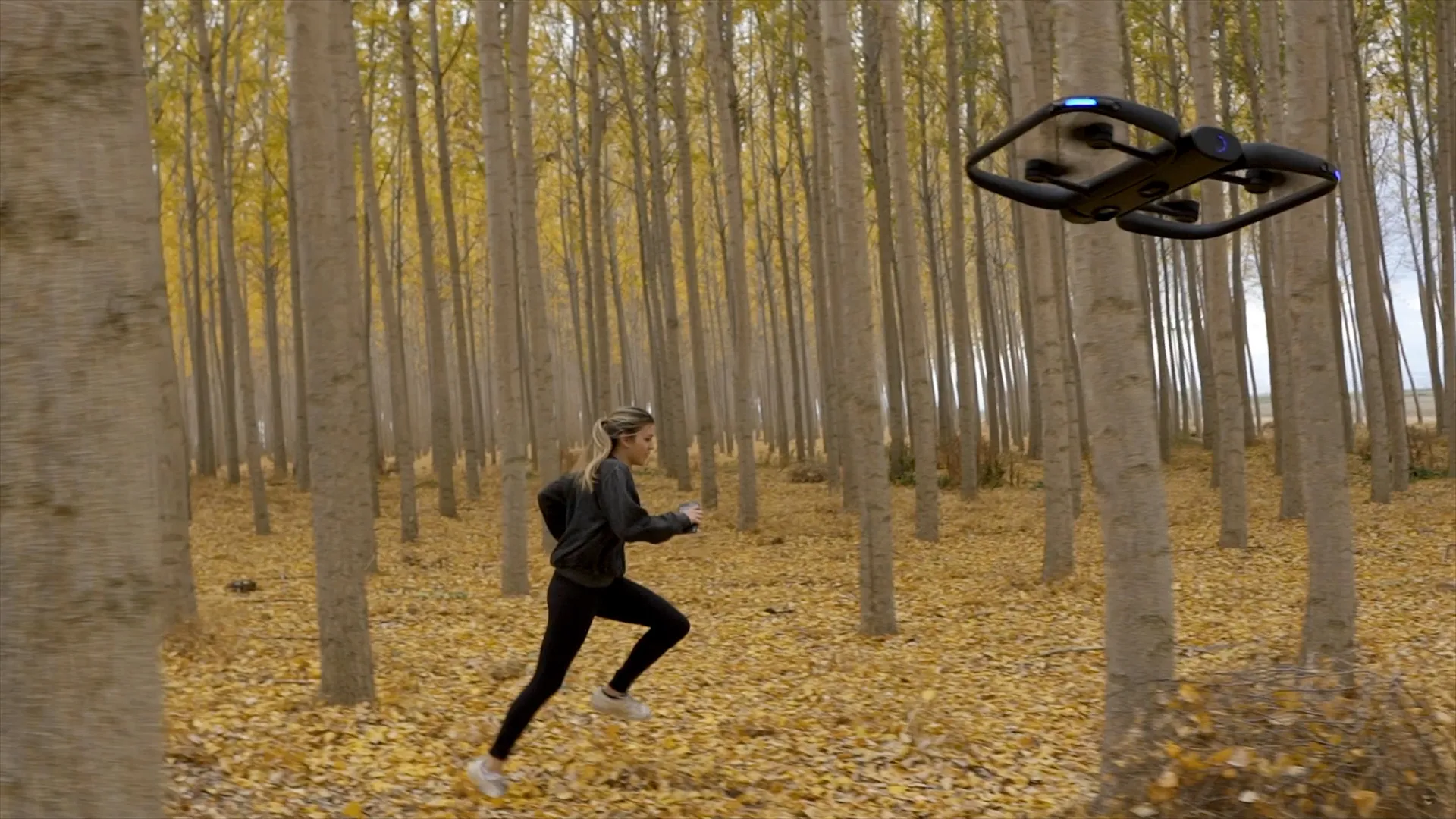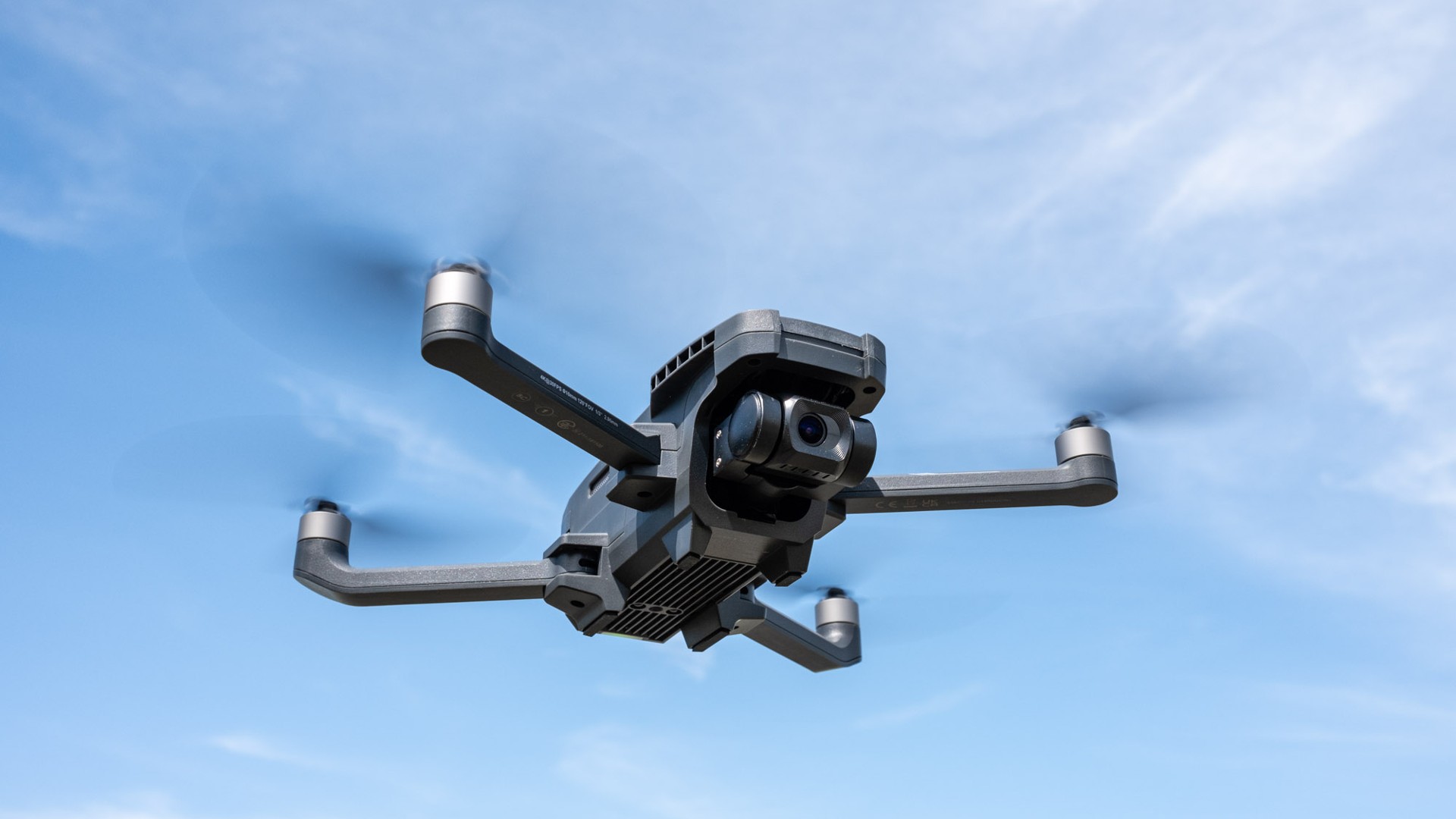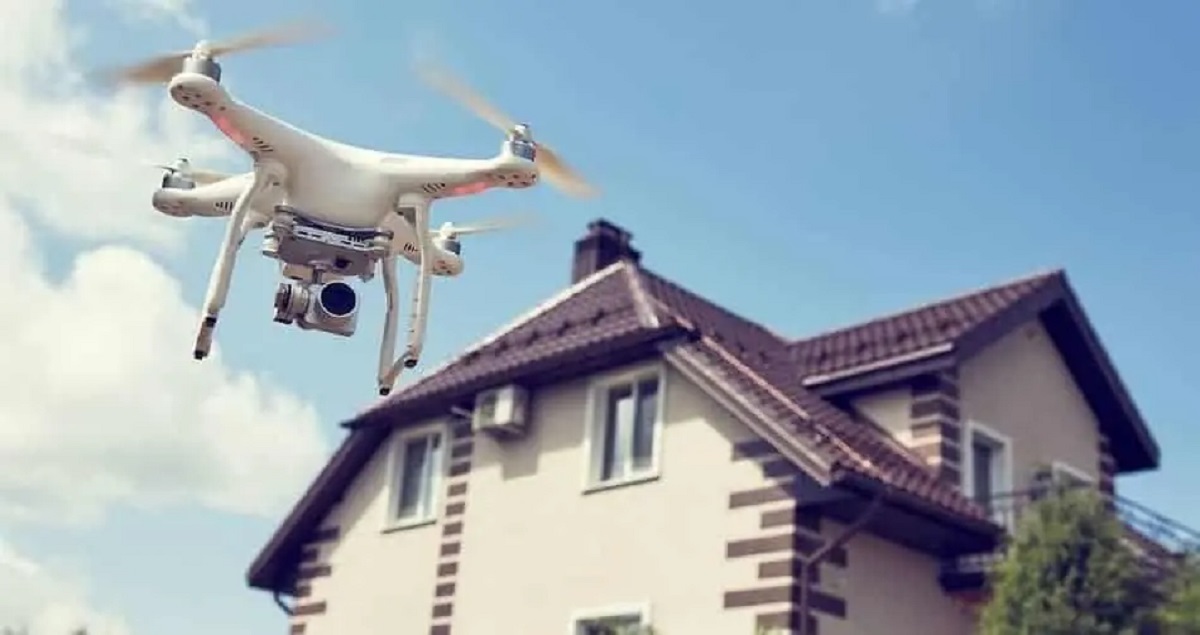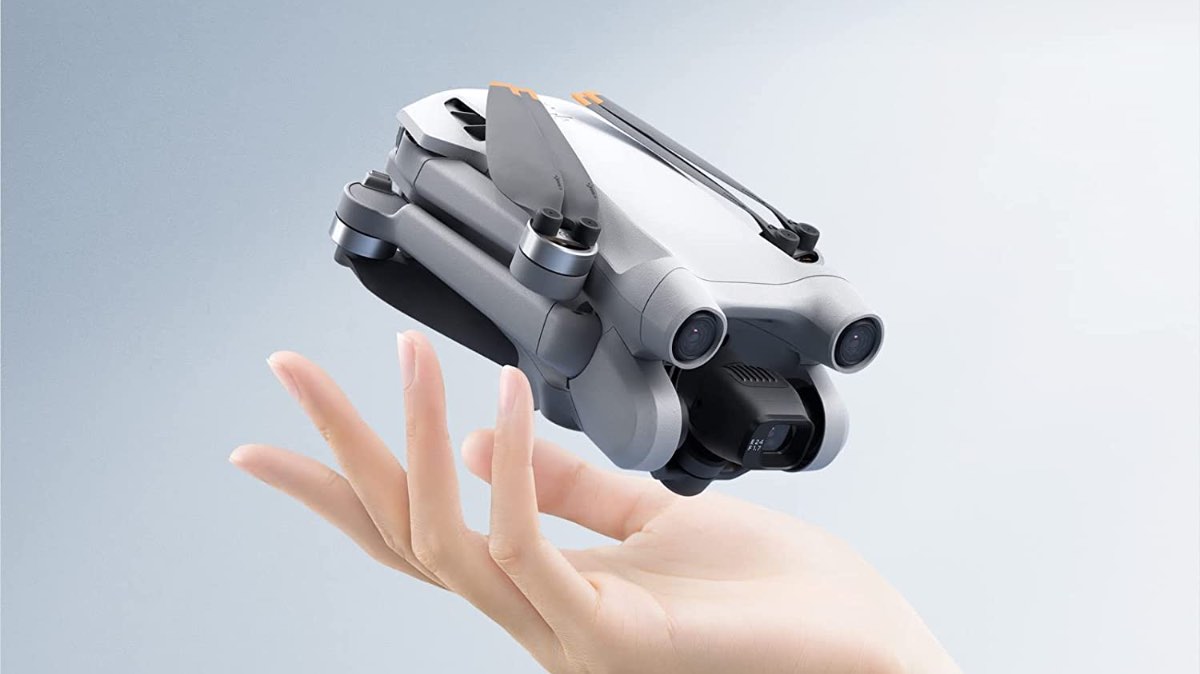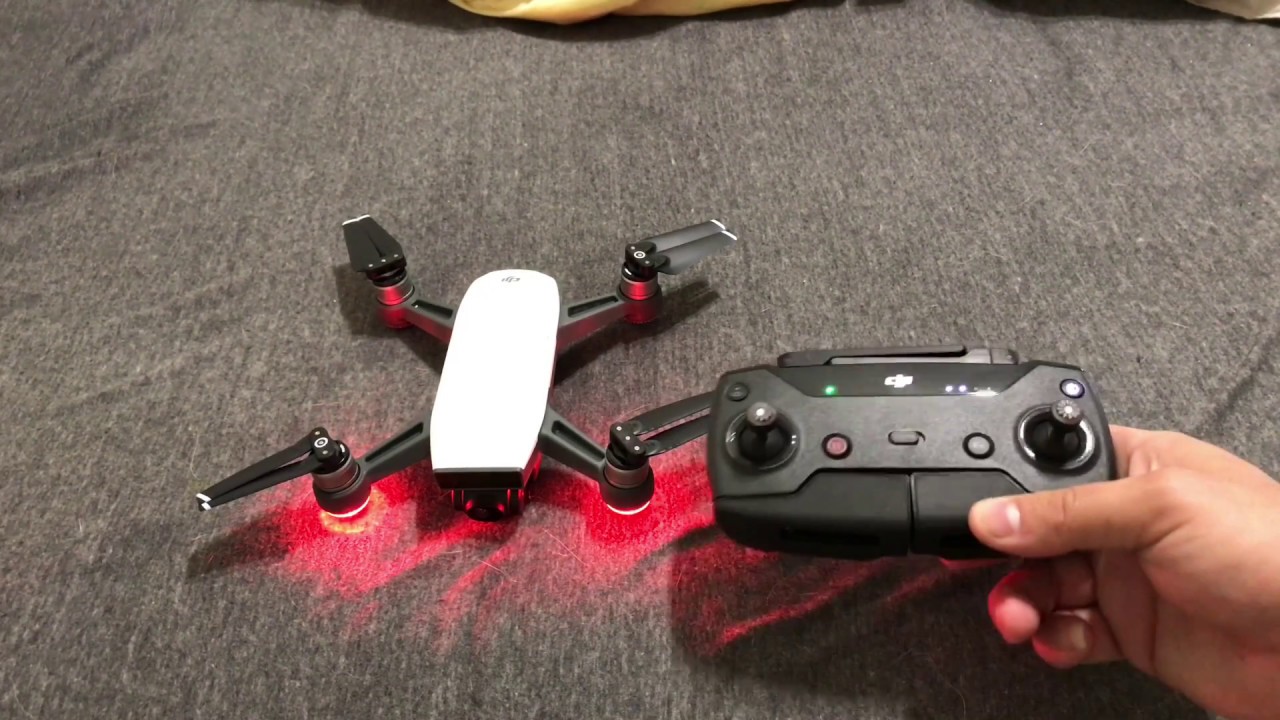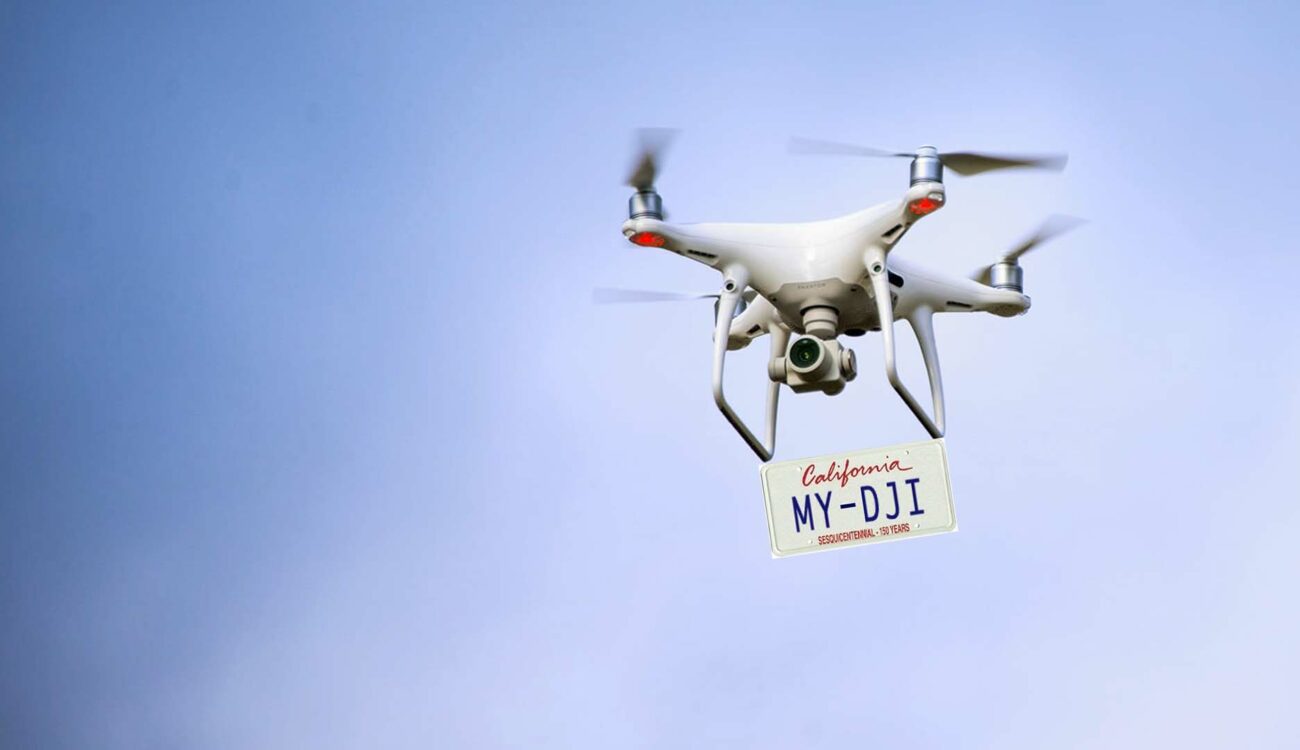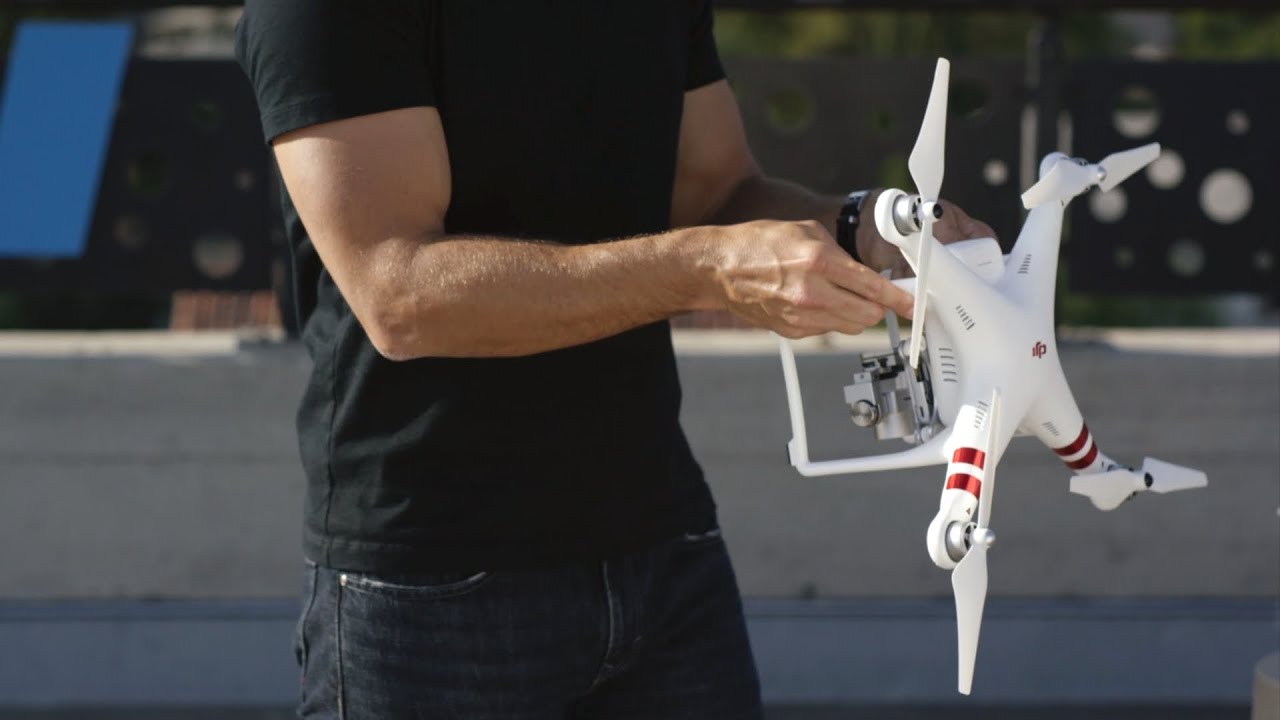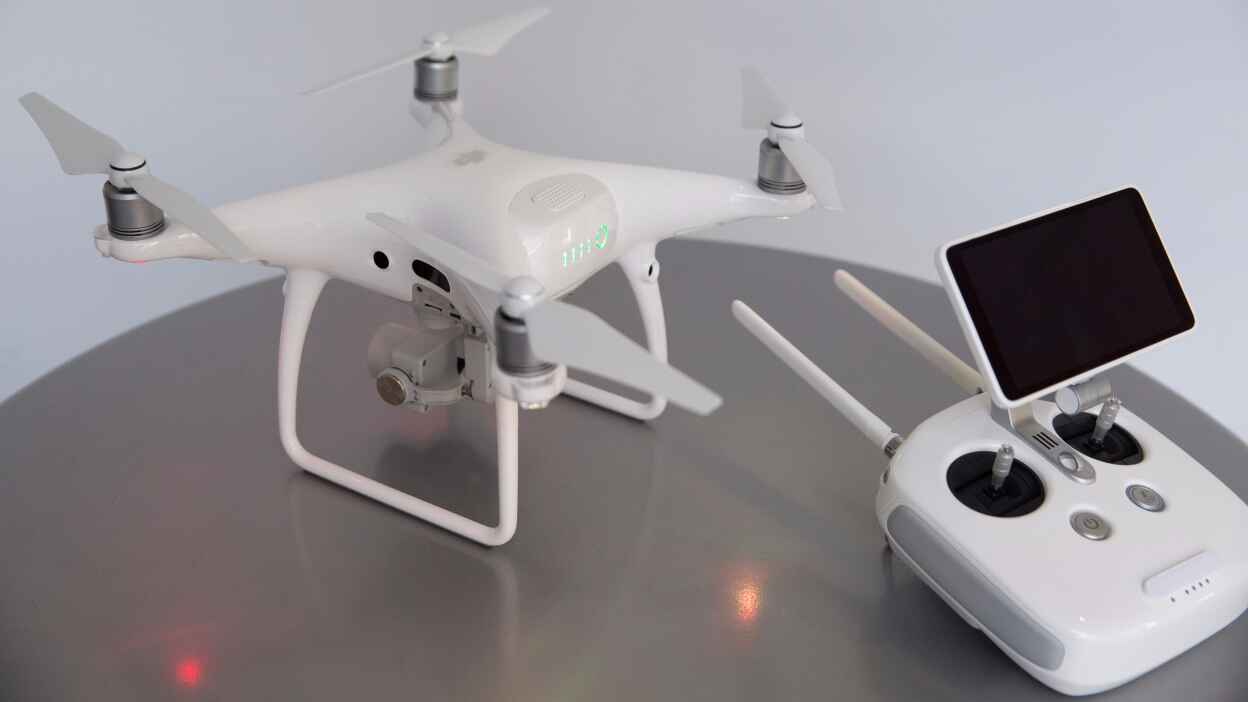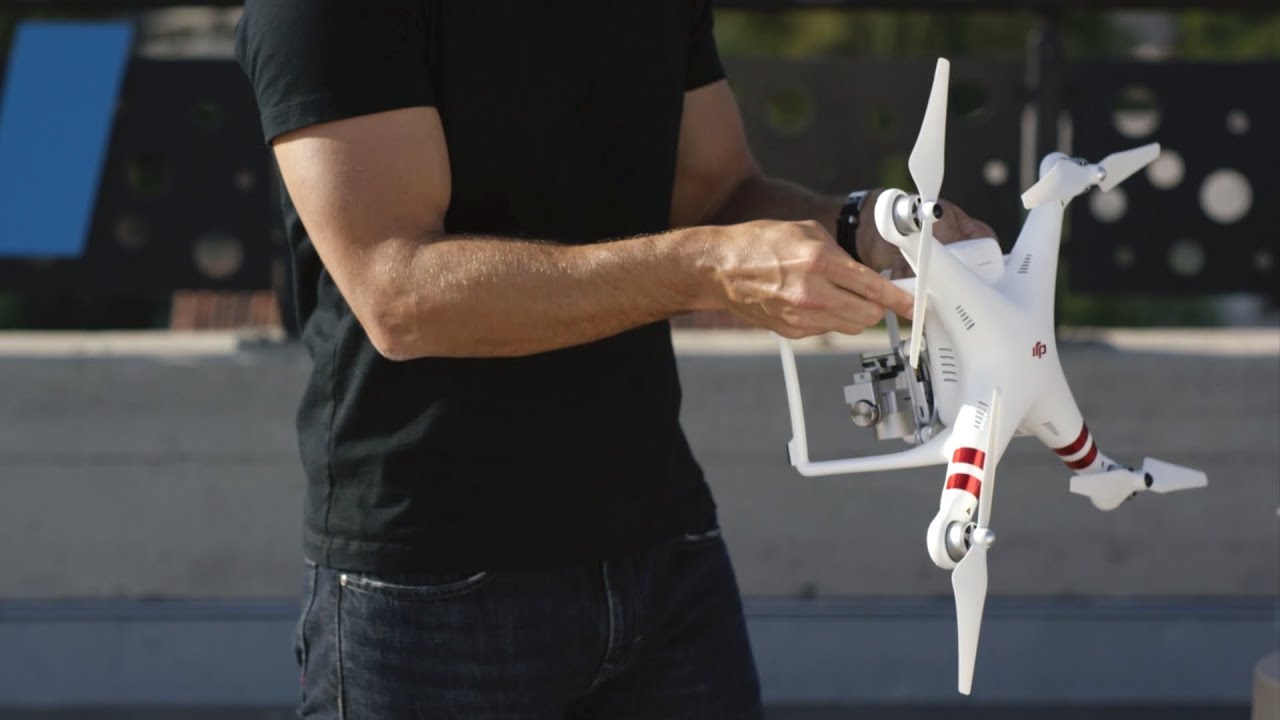Introduction
Drones have become increasingly popular in recent years, with their ability to capture stunning aerial footage and provide a unique perspective on the world. While most of us appreciate the use of drones for photography, videography, or even recreational purposes, there may be instances where you notice a drone following you. The experience of being followed by a drone can be unsettling and raise concerns about privacy and security.
Understanding why a drone is following you requires a basic understanding of how drones work and how they track objects. Drones are equipped with advanced technologies, such as GPS, cameras, and sensors, enabling them to navigate and locate specific targets. These capabilities make drones versatile tools in various industries, including filmmaking, surveillance, and emergency services.
There can be several reasons why a drone is following you, some of which may be innocent and others more concerning. It’s crucial to familiarize yourself with the legal issues and rights surrounding drones to know what actions you can take if you find yourself in this situation. Additionally, there are steps you can follow to protect yourself from unwanted drone tracking, ensuring your privacy remains intact.
This article will explore why a drone may be following you, providing insights into their tracking abilities and the potential reasons behind their actions. We will also discuss the legal considerations surrounding drones and the necessary steps to take if you find yourself being followed. By understanding drones and their capabilities, you can better protect your privacy and ensure a safe and secure environment.
Understanding Drones
Drones, also known as unmanned aerial vehicles (UAVs), are remote-controlled aircraft that can operate autonomously or be piloted by humans. They have gained immense popularity due to their versatility and wide range of applications. Drones are equipped with various components, including GPS, cameras, sensors, and communication systems, which allow them to navigate through the skies and perform specific tasks.
Modern drones come in all shapes and sizes, from small recreational quadcopters to large industrial drones used for commercial purposes. They are designed to fly at different altitudes and speeds, depending on their intended use. Drones are capable of capturing high-quality aerial imagery, performing surveying and mapping tasks, delivering packages, and even assisting in search and rescue operations.
One crucial aspect of drones is their tracking ability. Drones can be programmed to track and follow specific objects or individuals using various tracking technologies. These technologies include GPS, which allows the drone to determine its location and navigate accordingly. Drones can also use computer vision algorithms and sensors to identify and track objects based on their visual features.
Some advanced drones are even equipped with artificial intelligence (AI) algorithms, enabling them to learn and adapt to their surroundings. These AI-powered drones can track and follow moving objects, predict their behavior, and capture footage or gather data more effectively. Such advancements in drone technology have opened up new possibilities in industries like filmmaking, wildlife monitoring, and surveillance.
Understanding the capabilities of drones is essential in comprehending why a drone may be following you. Whether it’s a curious hobbyist flying their drone too close or a more serious situation involving surveillance or harassment, knowing how drones operate can provide insights into the reasons behind their actions. In the following sections, we will explore some of the possible reasons a drone may be following you and the legal considerations surrounding drone usage.
How Drones Track Objects
Tracking objects is a fundamental capability of drones, allowing them to follow specific targets accurately and efficiently. Drones utilize a combination of technologies and sensors to track objects, overcoming challenges like motion, distance, and environmental conditions. Let’s explore some of the common methods drones use to track objects.
1. GPS Tracking: Most drones today are equipped with GPS (Global Positioning System) technology. GPS allows drones to determine their precise location and navigate based on coordinates. By tracking their own position and the position of the target object, drones can maintain a consistent distance and trajectory while following the object.
2. Visual Recognition: Drones can utilize computer vision algorithms and cameras to recognize and track objects based on their visual features. This method involves extracting key visual characteristics from the object and using them as reference points for tracking. Advanced drones with AI capabilities can even track objects in real-time and make autonomous decisions based on the visual data they collect.
3. Radio Frequency (RF) Tracking: Drones can also track objects using RF signals. This method often involves a transmitter attached to the object, emitting signals that the drone receives and locks onto. RF tracking is commonly used in scenarios where visual tracking is not suitable, such as tracking objects in dense foliage or low light conditions.
4. Active Beacons: Some drones can track objects by using active beacons. These beacons emit a signal that the drone can detect, allowing it to follow the signal source. Active beacons can be useful in scenarios where GPS or visual tracking may not be reliable, such as indoor environments or areas with signal interference.
It’s important to note that the specific tracking method used by a drone depends on its capabilities and the purpose for which it is being utilized. Commercial drones designed for photography or videography may rely heavily on visual recognition, while drones used for surveillance or search and rescue missions may utilize a combination of GPS, RF, and visual tracking.
Understanding how drones track objects can shed light on how and why a drone may be following you. Whether the drone is tracking you for harmless recreational purposes or for more concerning motives, knowing the tracking capabilities of drones can help you assess the situation better. In the following sections, we will dive into possible reasons for a drone following you and the legal implications surrounding drone tracking.
Possible Reasons for a Drone Following You
There can be several reasons why a drone is following you, some of which may be innocent and others more concerning. Understanding these reasons can help you evaluate the situation and determine the appropriate steps to take. Here are some possible explanations for a drone tracking your movements:
1. Recreational Purposes: One of the most common reasons for a drone following you is recreational use. Hobbyists and enthusiasts may fly their drones in public spaces, capturing aerial footage or practicing their piloting skills. If the drone appears to be merely observing your activities from a distance without any intrusive behavior, it is likely being operated by an individual for personal enjoyment.
2. Photography and Videography: Drones are increasingly used for aerial photography and videography. If you find a drone following you while you’re in a picturesque location or during an event, it could be a professional photographer or filmmaker capturing footage from a unique perspective. In such cases, the drone’s focus is on the surroundings rather than specifically targeting you.
3. Surveillance and Security: Drones equipped with advanced cameras and tracking capabilities are employed for surveillance and security purposes. Law enforcement agencies, for instance, may use drones to monitor public gatherings or to aid in search and rescue operations. If you are in an area where heightened security measures are in place, it is possible that a drone is following you as part of official surveillance.
4. Personal Privacy Invasion: While the majority of drone operators adhere to ethical guidelines and regulations, there can be cases where drones are used to invade personal privacy. Peeping Toms or individuals with malicious intent may deploy drones for the purpose of spying on others or gathering personal information. If you suspect that a drone is following you persistently, invading your privacy, or displaying suspicious behavior, it is crucial to take appropriate action to protect yourself.
5. Harassment or Stalking: In rare instances, an individual may use a drone to harass or stalk someone. This can be an alarming situation that requires immediate attention and action. If you consistently notice a drone following you, especially in your private spaces or at unusual hours, it’s important to reach out to the authorities and seek legal assistance to address the issue.
It’s worth mentioning that the motivations behind a drone following you can vary, and it’s essential to assess the situation in context. If you are uncertain about the intentions of the drone operator or feel uneasy about being followed, it’s always advisable to prioritize your safety and privacy by taking appropriate measures.
In the following sections, we will discuss the legal considerations surrounding drones and the steps you can take if you find yourself being followed by a drone.
Legal Issues and Rights Regarding Drones
The increasing prevalence of drones has raised important legal considerations regarding their usage and the rights of individuals being observed or tracked. Understanding the legal framework surrounding drones can help you know your rights and take appropriate action if you believe your privacy or safety is being compromised. Here are some key legal issues to be aware of:
1. Drone Regulations: Most countries have regulations and guidelines in place for operating drones. These regulations typically cover aspects such as drone registration, pilot licensing, flight restrictions, and privacy protection. Familiarize yourself with the drone regulations in your jurisdiction to understand the rules that drone operators must adhere to.
2. Privacy Concerns: Drones equipped with cameras can potentially infringe upon an individual’s right to privacy. While flying in public spaces generally has fewer restrictions, drone operators should respect the privacy of others. If a drone is violating your privacy by hovering outside your private property or capturing sensitive information without consent, it may be a breach of privacy laws.
3. Trespassing: Drone operators must be aware of the trespassing laws in their jurisdiction. Flying a drone over private property without permission may constitute trespassing. However, the laws regarding drone trespassing can vary, and it’s essential to consult local regulations or seek legal advice if you suspect a drone is trespassing on your property.
4. Harassment and Stalking: If you believe a drone is being used to harass, stalk, or intimidate you, it is important to report the incident to the appropriate authorities. Harassment and stalking laws also apply to the use of drones for such purposes, and legal action can be taken against individuals engaged in such activities.
5. Recording Laws: In many jurisdictions, recording audio or video of individuals without their consent is illegal. This applies to drones as well. Drone operators must be mindful of the recording laws in their jurisdiction and respect the privacy of individuals while flying their drones.
While legal issues regarding drones are still evolving, it’s crucial to stay informed about the laws and regulations specific to your location. If you believe that your rights are being violated by a drone, document the incidents, gather evidence, and report them to the relevant authorities. Consulting a legal professional may also be necessary to understand your rights and explore possible legal recourse.
In the next section, we will discuss the steps you can take if you find yourself being followed by a drone, regardless of the intentions behind its tracking.
Steps to Take if a Drone is Following You
Discovering that a drone is following you can be unsettling, and it’s important to take action to ensure your safety and privacy. By following these steps, you can address the situation effectively:
1. Stay Calm: It’s essential to remain calm and composed when you notice a drone following you. Panicking may cloud your judgment and prevent you from taking the necessary steps to address the situation.
2. Document the Incident: Take note of the location, time, and date when you first observed the drone. If possible, try to capture clear photos or videos of the drone and its activities without jeopardizing your safety. These records can be valuable evidence if you need to report the incident to authorities later.
3. Find Witnesses: If there are other people around, try to identify any witnesses who may have also noticed the drone. Their observations and testimonies can strengthen your case and provide additional support when reporting the incident.
4. Avoid Confrontation: While it may be tempting to confront the drone operator, it’s generally best to avoid direct confrontation. Engaging in conflicts can escalate the situation and potentially put your safety at risk. Instead, focus on gathering information and taking appropriate action through proper channels.
5. Report to Authorities: Contact local law enforcement or relevant government agencies to report the incident. Provide them with all the details you have documented, including any witnesses and evidence. They can guide you on how to proceed and may conduct their investigation if necessary.
6. Seek Legal Advice: If you believe your rights have been violated or are unsure about the legality of the drone’s activities, consult a legal professional experienced in drone and privacy laws. They can provide guidance on your rights, potential legal action, and assist you in protecting your privacy and well-being.
7. Protect Your Privacy: Take precautions to protect your privacy and maintain a sense of security. Close blinds or curtains in your home to prevent intrusive recordings, be cautious about sharing personal information online, and consider using privacy-enhancing technologies to safeguard your digital footprint.
Remember, it’s important to proactively address the situation if you believe a drone is following you. By staying vigilant, documenting the incidents, and seeking appropriate assistance, you can protect your privacy and take the necessary steps to maintain your safety and well-being.
In the following section, we will discuss ways to protect yourself from unwanted drone tracking, regardless of the intentions behind the drone’s activities.
Protecting Yourself from Unwanted Drone Tracking
While it’s not always possible to prevent someone from flying a drone near you, there are measures you can take to protect yourself from unwanted drone tracking and maintain your privacy. Consider the following steps:
1. Familiarize Yourself with Local Laws: Understand the drone regulations and privacy laws in your area. This knowledge will help you understand your rights and the restrictions on drone flights. Stay updated on any new laws or regulations that may be implemented.
2. Maintain Privacy at Home: Secure your privacy by installing fences, hedges, or privacy screens around your property. Keep blinds or curtains closed when you’re indoors to prevent potential intrusive recordings by drones. If you notice a drone hovering near your property frequently, consult local authorities for guidance.
3. Be Mindful of Open Spaces: When engaging in activities in open spaces, consider the possibility of drones in the vicinity. If you prefer to maintain your privacy, choose areas with a lower likelihood of drone activity, such as secluded parks or private venues.
4. Anti-Drone Technology: Explore the use of anti-drone technology to protect your privacy. There are devices available on the market that can detect and deter drones from flying near your property. Research and consult professionals to determine which options are suitable for your specific needs.
5. WiFi and Bluetooth Security: Protect your digital privacy by securing your WiFi network and Bluetooth devices. Ensure your home network is password-protected, and regularly update your router’s security settings. Avoid connecting to unknown or unsecured WiFi networks, which could potentially be used by a drone operator to gather information.
6. Stay Informed and Vigilant: Keep yourself informed about new drone technologies and potential methods used for unwanted surveillance. Stay vigilant when you’re in public spaces and be mindful of any suspicious drone activity. Trust your instincts and report any concerns to the authorities.
7. Report Incidents: If you believe you are being targeted or harassed by a drone, report the incident to the appropriate authorities. Provide them with all the relevant information, including details about the drone and the incidents you have experienced. The authorities can investigate the matter and take necessary action to address the issue.
Remember, while these steps can help you protect your privacy, it’s important to strike a balance between maintaining your privacy and respecting the legitimate recreational or professional use of drones. By being proactive and taking necessary precautions, you can better protect yourself from unwanted drone tracking and preserve your privacy.
In the following section, we will wrap up the article by summarizing the key takeaways and emphasizing the significance of being informed about drone usage and privacy concerns.
Conclusion
Drones have become an integral part of our modern world, providing captivating aerial footage and serving various purposes across industries. However, the presence of a drone following you can often raise concerns about privacy, security, and personal safety. Understanding the capabilities of drones, the reasons behind their tracking, and the legal issues surrounding their usage is essential to navigate these situations effectively.
In this article, we explored the fundamentals of drones, their tracking abilities, and possible reasons for a drone following you. We discussed innocent motives like recreational and photography purposes, as well as more concerning possibilities such as privacy invasion, harassment, and stalking. It’s vital to be aware of these reasons to differentiate between harmless drone activities and potential threats to your privacy.
We also highlighted the legal considerations surrounding drones, including regulations, privacy laws, and the importance of reporting incidents to the authorities. Knowing your rights and seeking legal advice when necessary can help you address any violations of privacy or safety effectively.
Furthermore, we provided steps to take if a drone is following you, emphasizing the importance of staying calm, documenting incidents, and reporting to the appropriate authorities. By being proactive and following these steps, you can protect your privacy, gather evidence, and potentially mitigate the situation.
For additional protection, we discussed ways to safeguard yourself from unwanted drone tracking, such as familiarizing yourself with local laws, maintaining privacy at home, utilizing anti-drone technology, and ensuring the security of your WiFi and Bluetooth devices. These measures contribute to maintaining your privacy and personal safety.
In conclusion, while drones can offer immense benefits and entertainment, it’s necessary to remain informed and vigilant about their usage. By understanding their capabilities, recognizing potential risks, and taking appropriate actions, you can navigate situations where a drone is following you while prioritizing your privacy, security, and peace of mind.







